July 6, 2025

The article titled "9 Essential ABA Terms Every Practitioner Should Know" delves into crucial terminology and concepts within Applied Behavior Analysis (ABA) that are indispensable for practitioners in the field. Understanding specific ABA terms is not merely beneficial; it is essential for enhancing the effectiveness of interventions and improving outcomes for clients, particularly those with autism and developmental disorders. As the demand for Board Certified Behavior Analysts (BCBAs) continues to rise, mastering these terms becomes increasingly important. This knowledge empowers practitioners to navigate the complexities of their work with confidence and authority.
By familiarizing themselves with these essential terms, practitioners can better articulate their strategies and goals, ultimately leading to more successful client outcomes. Consider how a deeper understanding of ABA terminology can transform your practice. Are you ready to elevate your expertise and make a more significant impact in the lives of your clients? The journey begins with knowledge, and this article serves as a vital resource for that purpose.
In conclusion, embracing these key ABA terms is not just an academic exercise; it is a commitment to excellence in practice. Equip yourself with the language of ABA, and watch as your interventions become more effective and your clients thrive.
The landscape of Applied Behavior Analysis (ABA) is witnessing an unprecedented surge in demand for skilled professionals, particularly Board Certified Behavior Analysts (BCBAs). As awareness of autism and the effectiveness of ABA therapy continues to grow, it becomes imperative for practitioners to be well-versed in essential ABA terminology. This knowledge is crucial for navigating this dynamic field effectively.
What are the key concepts that every ABA practitioner should understand to enhance their practice and improve client outcomes? This article explores nine fundamental ABA terms that not only define the practice but also empower professionals to implement effective strategies in their work.
The demand for (BCBAs) is projected to surge by an impressive 25% by 2026. In this rapidly expanding market, Hire ABA serves as a specialized recruitment platform that connects BCBAs with premier job opportunities. With job listings for BCBAs rising by 58% in 2024 alone, it is clear that the job market is eager for qualified professionals. This surge is driven by heightened awareness of autism and the proven effectiveness of ABA terms in addressing behavioral challenges.
Hire ABA plays a crucial role in streamlining the hiring process, ensuring that qualified professionals can easily find positions that align with their skills and career goals. By simplifying job matching through personalized resume assessments, which include of candidates' experiences and career aspirations, and utilizing advanced job fit scoring, Hire ABA enhances recruitment efficiency. This empowers BCBAs to navigate their career trajectories with confidence.
In a landscape where the average salary for BCBAs ranges from $61,000 to $90,000, with entry-level BCBAs earning between $61,000 and $70,000 and mid-level BCBAs earning between $70,000 and $80,000, the platform's focus on specialized recruitment is vital. Industry leaders emphasize the importance of targeted recruitment strategies, making Hire ABA a key resource for both job seekers and employers in the ABA therapy sector according to ABA terms.
Furthermore, the demand for BCBAs varies significantly across different regions, with urban areas presenting more favorable growth rates. This makes it essential for job seekers to consider geographical factors when exploring opportunities. Are you facing challenges in hiring qualified BCBAs? Consider how Hire ABA can address these issues and enhance your recruitment strategy.
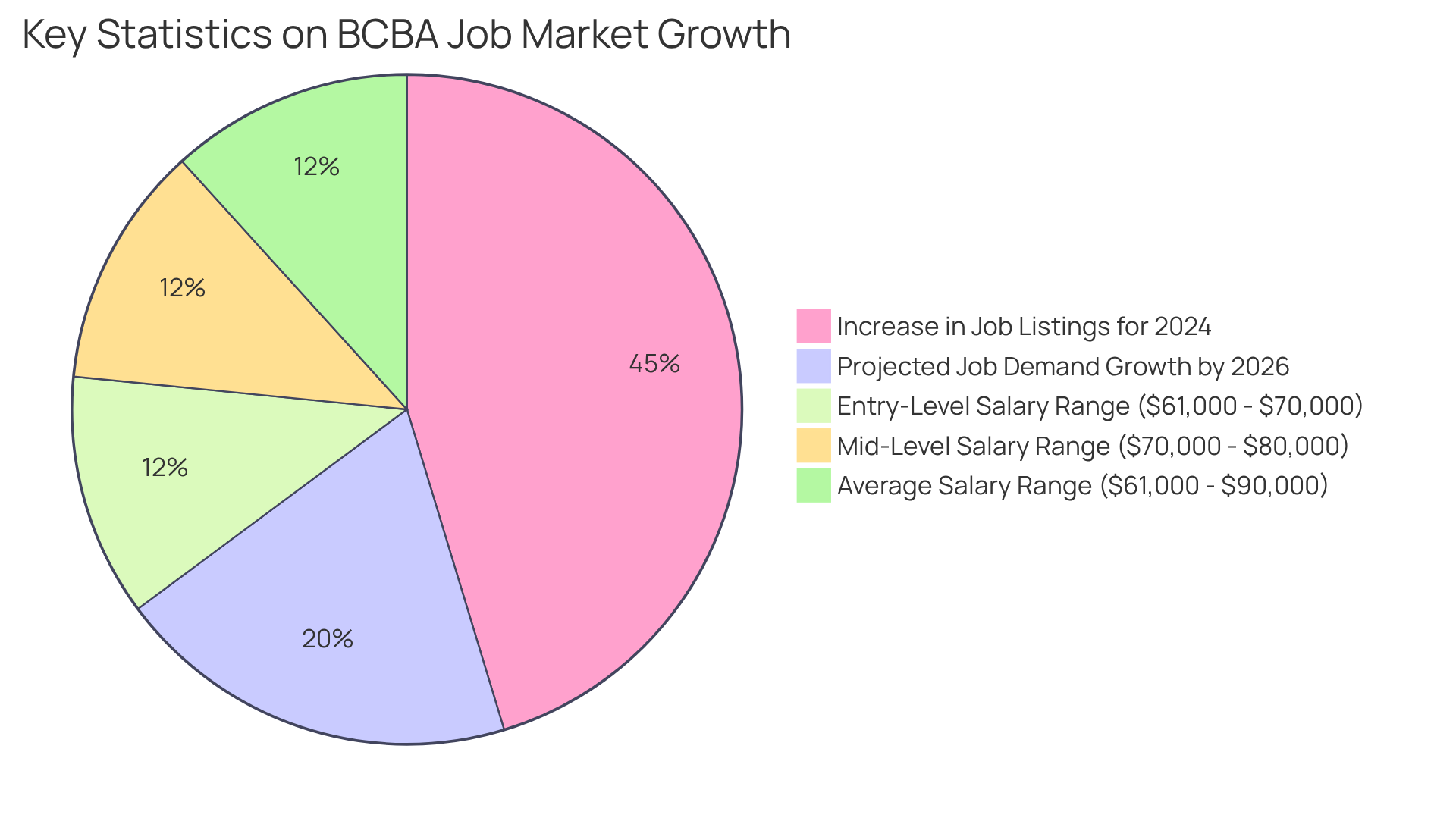
Applied Behavior Analysis (ABA) encompasses various ABA terms that represent a scientific discipline dedicated to understanding and enhancing human behavior through principles rooted in behavioral psychology. By implementing systematic evaluation and modification strategies in line with ABA terms, professionals can facilitate substantial behavioral improvements, especially within therapeutic contexts for individuals with autism and other developmental disorders. Notably, there has been a remarkable 5,852% increase in the demand for professionals familiar with ABA terms from 2010 to 2021. This trend underscores the rising acknowledgment of ABA terms, with research indicating that .
Recent research emphasizes the critical importance of early intervention, revealing that the commencement of ABA therapy at a young age can lead to significant advancements in communication, social skills, and adaptive functions as outlined in ABA terms. For example, a 2012 study recommended a minimum of 25 hours of weekly ABA terms sessions to achieve optimal outcomes for children with autism, highlighting the essential role of consistent therapy. Moreover, the adaptability of ABA terms allows for tailored interventions that cater to the distinct needs of each individual, including those with developmental disabilities or brain injuries, thereby improving their quality of life. As the field progresses, continuous professional development for ABA practitioners remains vital to ensure the provision of evidence-based interventions that align with the diverse needs of clients, especially in understanding ABA terms, as ongoing education is crucial for staying abreast of the latest research and methodologies in the discipline.
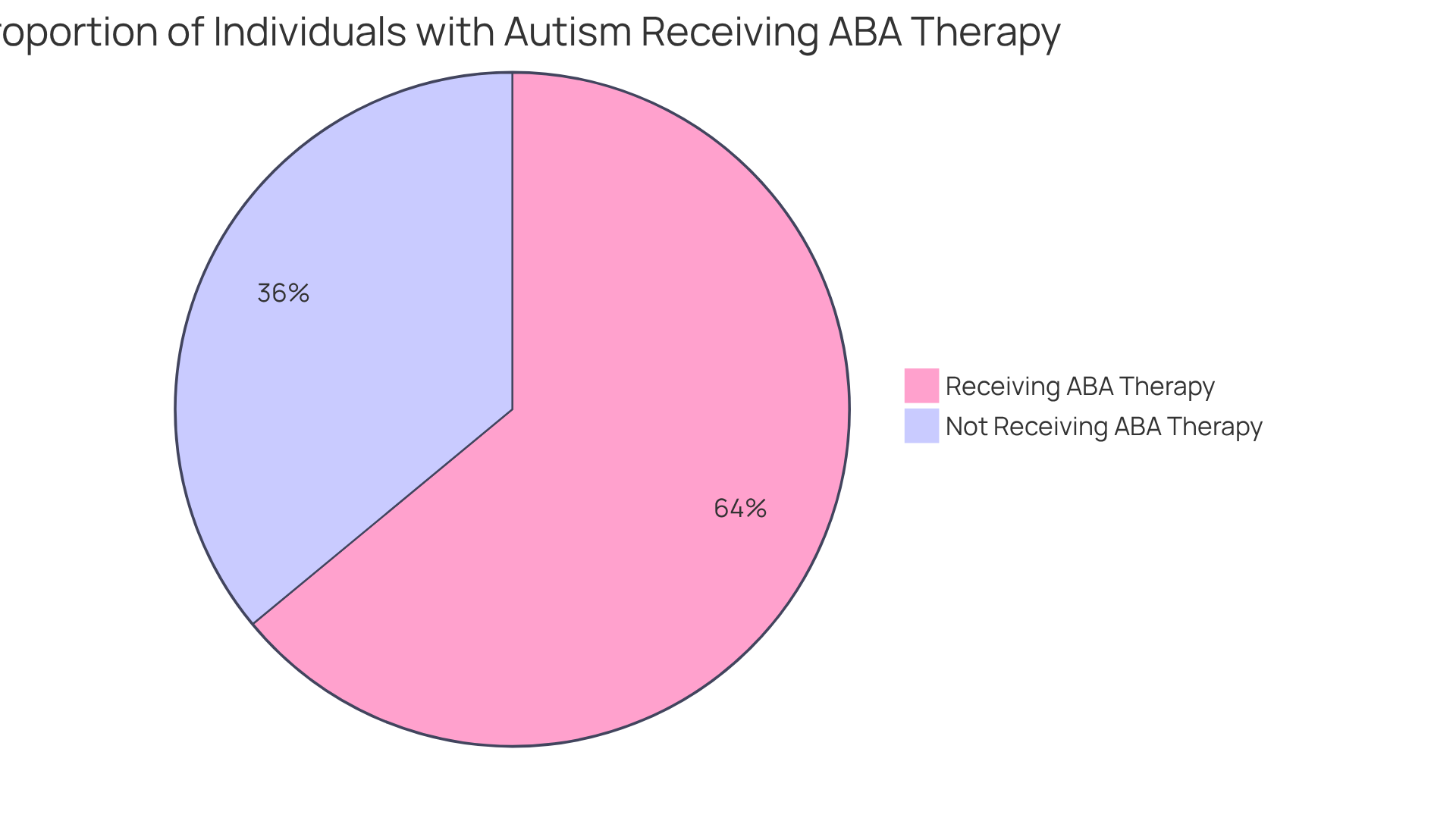
Reinforcement stands as a cornerstone in ABA terms, facilitating the promotion and establishment of desired behaviors through rewards or positive outcomes. In the context of ABA terms, reinforcement is divided into two distinct categories:
Mastering these reinforcement techniques is crucial for practitioners, as they significantly impact the effectiveness of behavior modification strategies in ABA terms.
Research underscores that positive reinforcement can lead to remarkable improvements in behavior and skill acquisition, particularly for individuals diagnosed with autism spectrum disorders. A comprehensive study reveals that 90% of children exhibit progress when therapy hours are coupled with active caregiver involvement. Furthermore, systematic shaping procedures boast a 91% success rate in skill acquisition, highlighting the potency of structured reinforcement strategies.
Behavior analysts stress the necessity of timely and meaningful reinforcement delivery. As Rivka Hoch, a Clinical Director, aptly notes, "Giving the parents and families the support they need to help their child thrive is my favorite part of what I do." This statement emphasizes the , wherein caregivers play an essential role in implementing personalized approaches that align with their child's unique needs.
Current research validates the effectiveness of reinforcement strategies in modifying behavior, with findings indicating that interventions following ABA terms yield 82% higher client satisfaction and 64% improved long-term outcomes. By comprehensively understanding and adeptly applying both positive and negative reinforcement, practitioners can foster meaningful behavioral changes and enhance the quality of life for children undergoing ABA therapy.
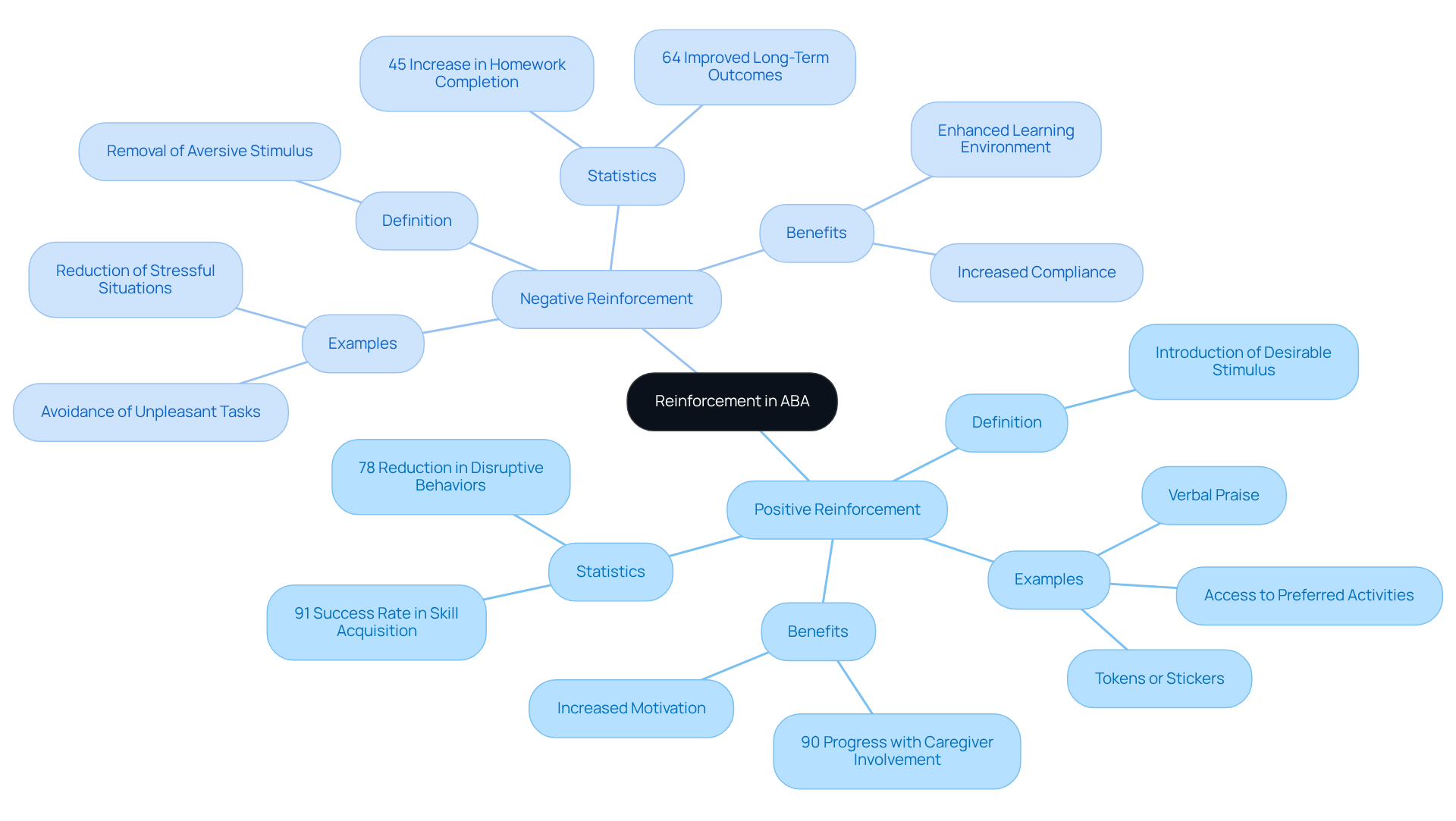
A Behavior Intervention Plan (BIP) serves as a pivotal framework designed to reduce challenging behaviors in clients. Grounded in data-driven assessments, these plans ensure that interventions are specifically tailored to meet the unique needs of each individual. Effective BIPs encompass various elements, including:
Research indicates that clients receiving BIPs often experience significant reductions in problematic behaviors, with success rates exceeding 89% in numerous cases. For instance, a case study involving a student named David revealed that his off-task behaviors, initially observed 90% of the time, decreased to just 10% following the implementation of a structured BIP. This underscores the potential of BIPs to drive .
Practitioners stress the necessity of collaboration among stakeholders—parents and educators alike—to amplify the effectiveness of BIPs. Experts in the field highlight that integrating family feedback and ongoing data collection is vital for monitoring progress and adjusting intervention strategies as needed. Joseph's experience exemplifies this; through the application of a BIP, his target behaviors diminished while his positive behaviors, such as listening and responding respectfully, increased.
Furthermore, the success of BIPs is often attributed to their capacity to address multiple behaviors at once, typically focusing on no more than four or five target behaviors simultaneously. This targeted approach not only streamlines the intervention process but also enhances the likelihood of achieving favorable outcomes.
In conclusion, the development and implementation of effective BIPs are crucial for practitioners committed to providing robust support for clients facing behavioral challenges.
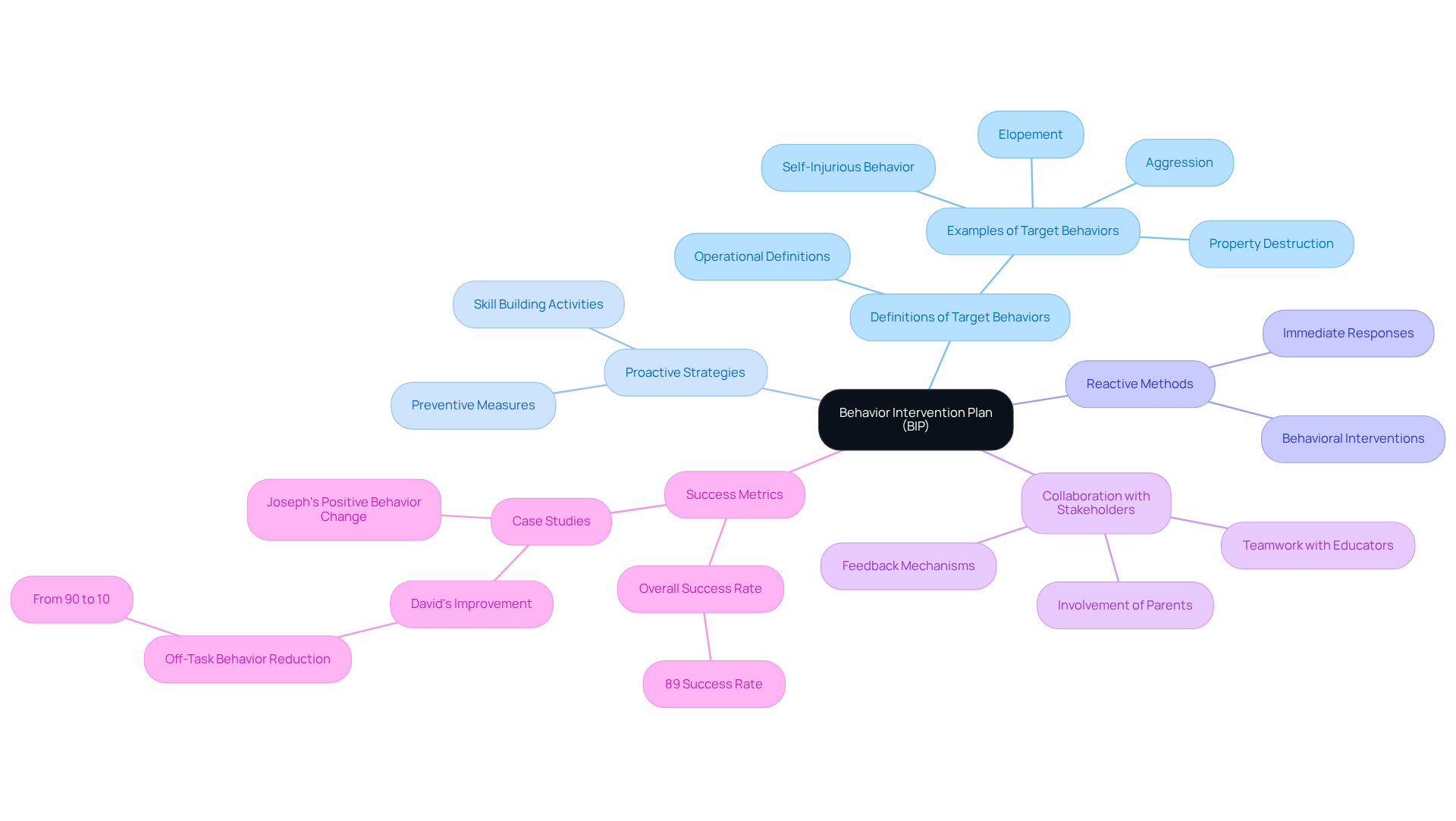
The is projected to increase by 25% by 2026, highlighting the urgent need for effective Discrete Trial Training (DTT) methods in ABA terms within the field of Applied Behavior Analysis (ABA) therapy. DTT is a meticulously organized instructional approach that efficiently divides abilities into small, manageable parts, aiding learning in children with autism spectrum disorder (ASD). Each trial consists of a clear instruction, a response from the learner, and a consequence, which can be reinforcement or correction. This structured method is especially beneficial for instructing new abilities and actions, establishing it as a fundamental aspect of ABA terms in therapy.
Current statistics underscore the efficacy of DTT, with studies showing that children who receive this intervention often achieve significant improvements in their overall development. For instance, a meta-analysis of early intensive behavioral intervention (EIBI) programs demonstrated large to moderate effect size changes in IQ and adaptive behavior scores compared to control conditions. Furthermore, research indicates that DTT has an over 89% success rate in treating children with ASD, underscoring its effectiveness. Notably, the average accuracy of DTT implementation during baseline was 64% (±9%), while after training it was 97% (±2%), illustrating the impact of proper training on DTT fidelity.
Practitioners in the field emphasize the benefits of DTT. One noted that "a customized approach ensures that therapy targets specific goals and maximizes the potential for progress and development." This sentiment reflects the importance of tailoring DTT methods to meet individual needs, which can enhance engagement and learning outcomes. DTT methods entail dividing intricate abilities into smaller, teachable units, enabling targeted instruction and practice. For instance, a standard DTT session may involve several trials where a particular ability is taught through repeated practice, ensuring that learners can master each element before advancing.
This structured approach not only aids in skill acquisition but also fosters a sense of achievement in learners, motivating them to continue their progress in ABA therapy. Additionally, interobserver agreement (IOA) data collected during sessions has shown high levels of reliability in DTT implementation, further validating its effectiveness. As the demand for BCBAs continues to rise, the implementation of effective DTT methods in line with ABA terms becomes increasingly crucial in addressing the needs of children with ASD.
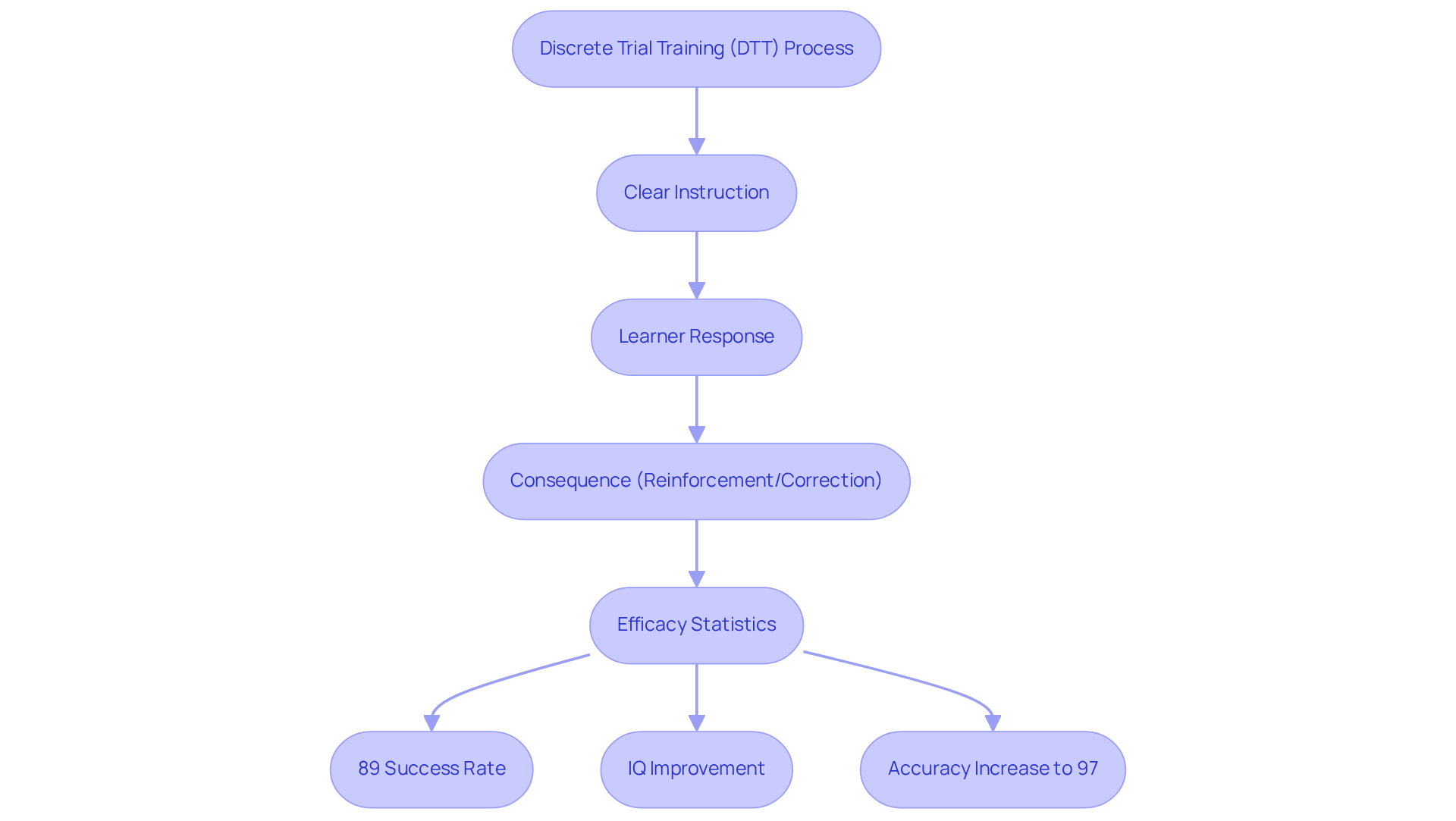
A Functional Behavior Assessment (FBA) serves as a systematic process designed to uncover the underlying reasons for specific behaviors. By meticulously examining the antecedents, actions, and outcomes, practitioners gain a comprehensive understanding of the factors that influence conduct. This critical information is essential for formulating that are tailored to meet individual needs. Consider how this approach can enhance your practice and lead to more successful outcomes.
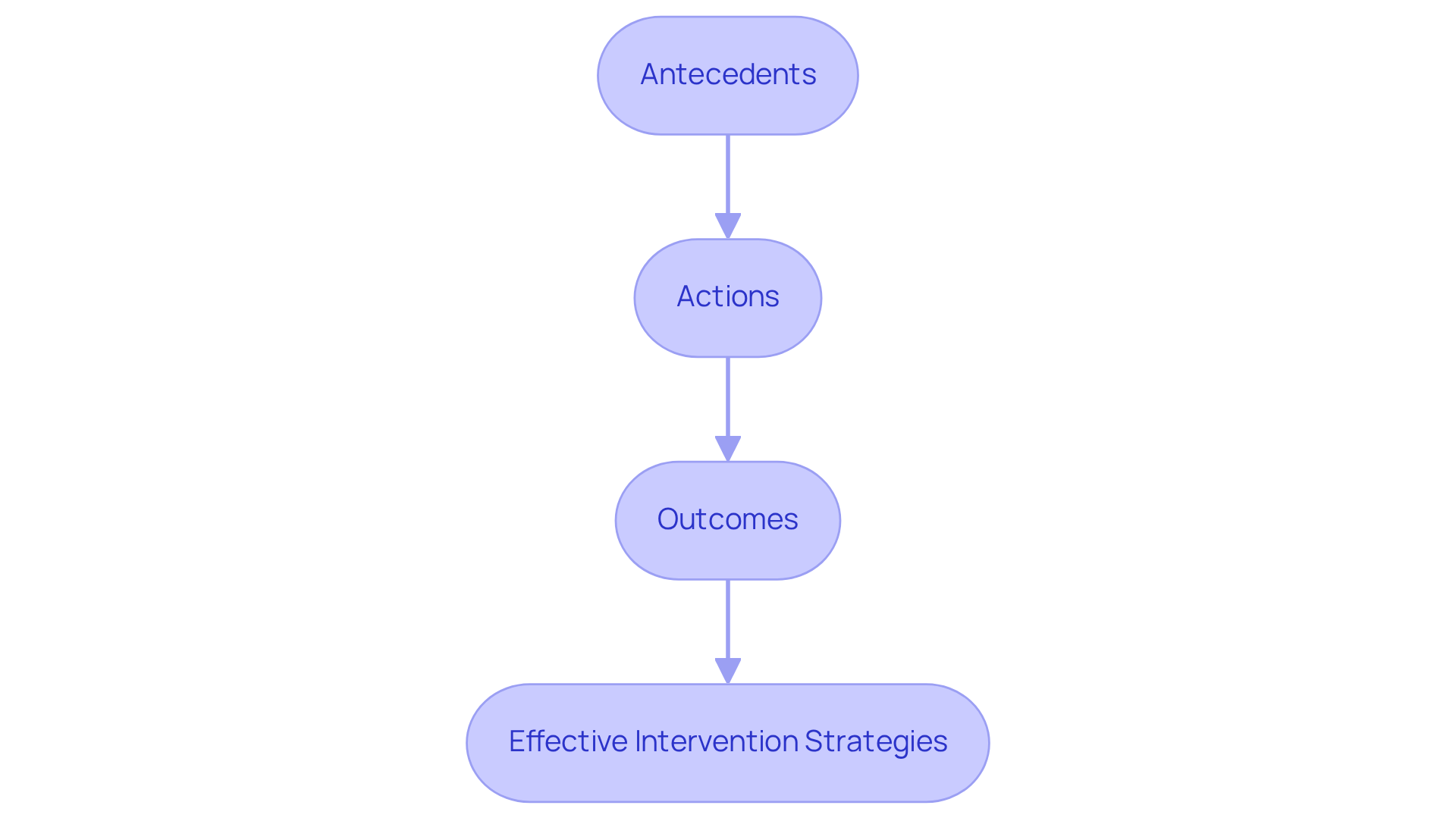
Positive reinforcement stands as a pivotal method in ABA terms, which involves the provision of a rewarding stimulus immediately following a desired action. This practice significantly increases the . Particularly beneficial for fostering positive behaviors in clients, especially children with autism, it is essential for practitioners to skillfully identify and implement reinforcers that align with their clients' interests and preferences.
Current trends in positive reinforcement techniques highlight the necessity of personalized approaches. For example, the integration of tangible rewards, social praise, and preferred activities tailored to individual interests can markedly boost engagement and motivation. Research consistently indicates that programs utilizing positive reinforcement techniques, such as those defined by ABA terms, yield superior results compared to those relying on punitive measures, underscoring its efficacy in facilitating enduring changes.
Leading analysts stress the importance of understanding the nuances of various reinforcers. Effective strategies encompass:
By prioritizing positive reinforcement, practitioners can establish a conducive atmosphere for development and emotional growth, ultimately enhancing treatment outcomes for clients.
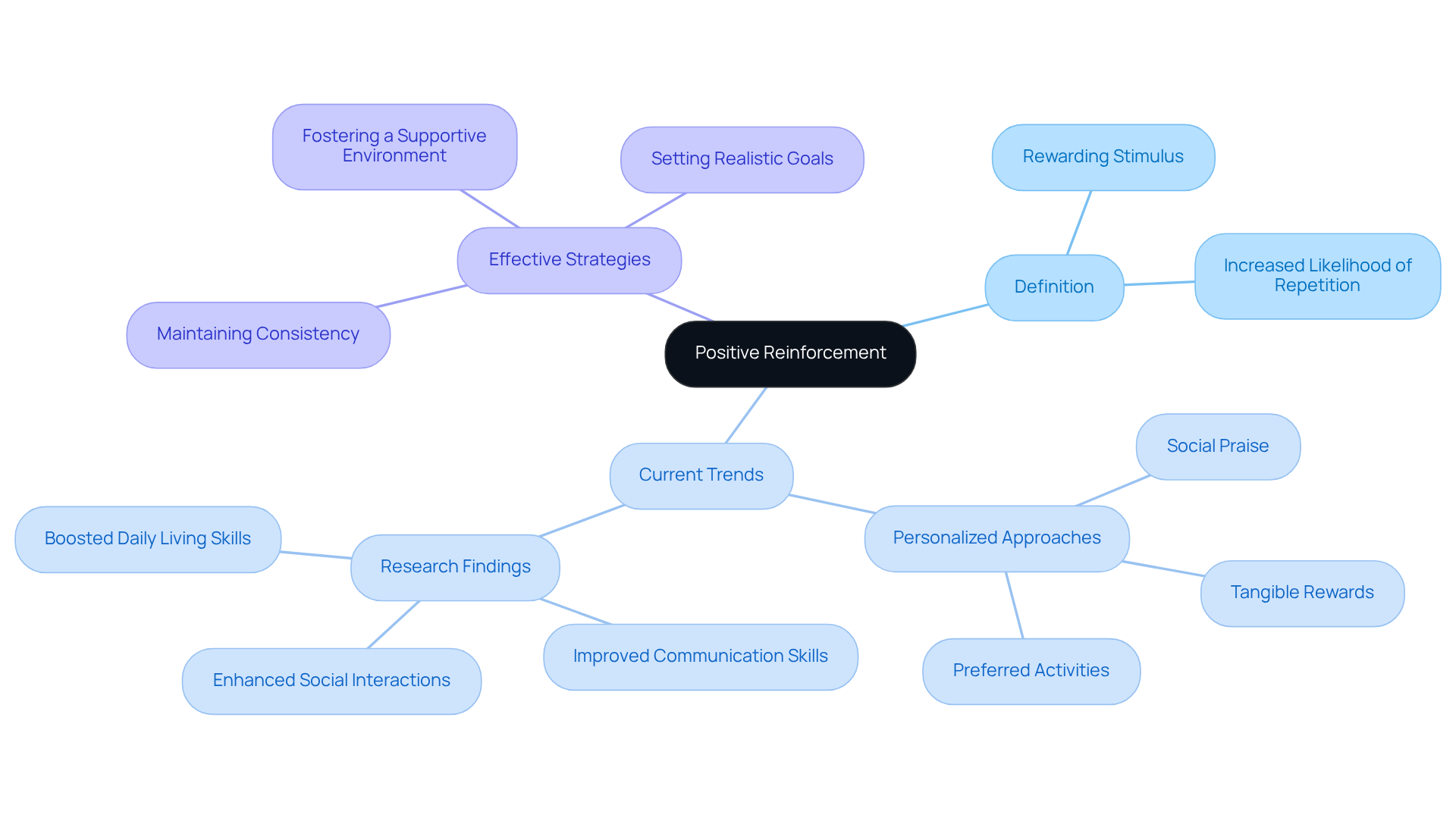
Shaping is a fundamental technique in ABA terms that involves gradually developing a desired behavior by reinforcing successive approximations. This method is especially effective for teaching intricate abilities that cannot be mastered in a single step. Notably, studies show that 92% of professionals believe that structured shaping methods significantly enhance ability acquisition (Source: Devlin Peck, eLearning Development). This statistic underscores its .
Successful applications of shaping can be observed across various settings, from educational environments to therapeutic practices. For instance, a study revealed that children with autism who experienced shaping techniques exhibited a remarkable 60% improvement in communication abilities over six months. This finding highlights the method's potential in fostering essential life skills.
To implement shaping effectively, practitioners must possess the skills to identify and reinforce each step of the process. Techniques such as breaking down tasks into manageable components and providing immediate feedback are crucial. Furthermore, 76% of analysts indicate that utilizing visual aids during shaping sessions enhances engagement and retention among learners (Source: Devlin Peck, eLearning Development).
Practitioners emphasize the importance of patience and consistency in shaping. As Devlin Peck, Founder of DevlinPeck.com, stated, 'The key to successful shaping is recognizing that every small step counts towards the larger goal.' This perspective highlights the gradual nature of behavior modification and the necessity of celebrating incremental progress.
Statistics further support the effectiveness of shaping, with studies demonstrating that 85% of individuals trained using this method show improved performance in targeted behaviors (Source: Devlin Peck, eLearning Development). This data reinforces the importance of shaping as an essential tool in the ABA terms toolkit, empowering professionals to promote significant development.
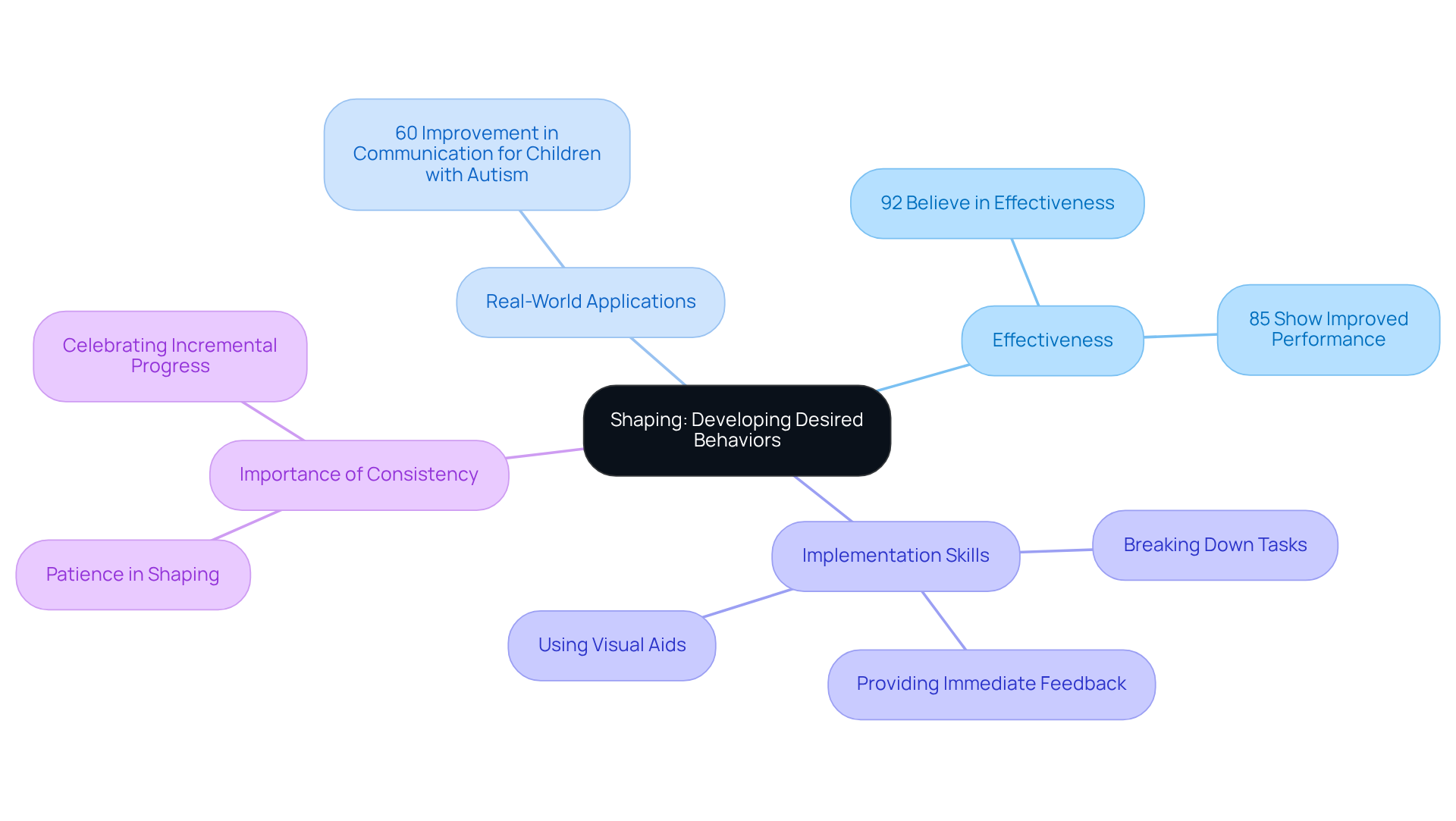
Task analysis is a pivotal technique in ABA terms, deconstructing complex skills into smaller, manageable components. This method empowers professionals to provide clear, sequential guidance, facilitating learning for clients, especially those who struggle with multi-step tasks. Research underscores the effectiveness of structured task analysis; a meta-analysis revealed that 41.8% of goals exhibited improvement following the implementation of a hybrid ABA treatment model that incorporated task analysis strategies. Notably, 76% of patients experienced upward trends in multiple goals post-implementation.
To conduct effective task analysis, practitioners should adhere to these steps:
Successful strategies for deconstructing complex skills include utilizing visual aids, modeling the task, and incorporating feedback loops to reinforce learning. In ABA terms, professionals emphasize the benefits of task analysis, noting its role in enhancing learning and promoting independence among clients. As one professional articulated, 'Task analysis transforms daunting tasks into achievable steps, empowering clients to succeed.' Furthermore, ongoing data collection is essential in ABA therapy, informing practitioners about the effectiveness of their interventions and enabling necessary adjustments. By employing task analysis, behavior analysts can craft personalized and effective teaching approaches, leading to significant advancements in their clients' abilities.
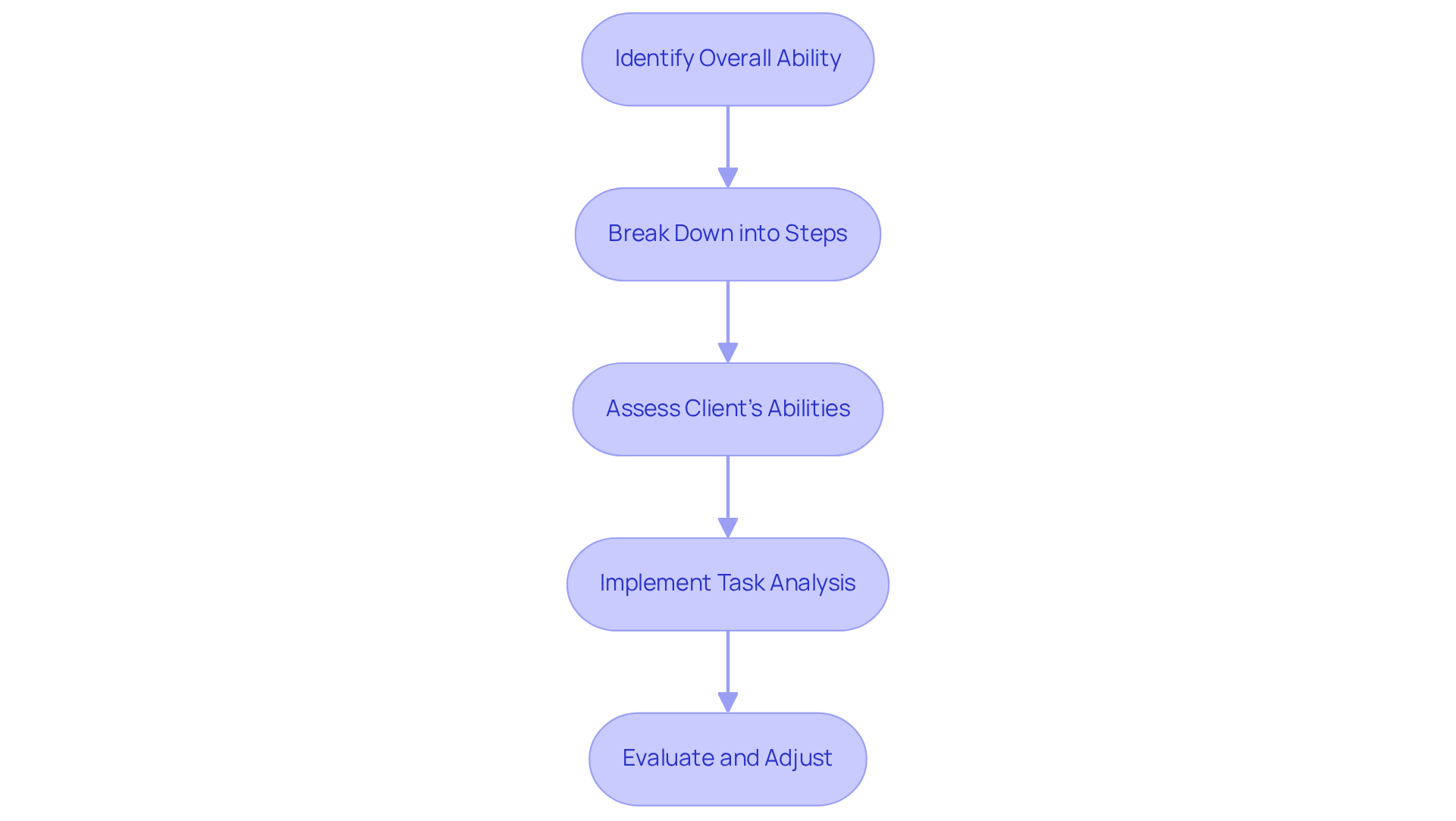
In ABA terms, generalization represents the clients' ability to apply acquired techniques across diverse contexts and situations, serving as a crucial element in ensuring that the benefits of ABA therapy extend beyond therapy sessions. Effective strategies for promoting generalization encompass varying the teaching environment and integrating real-life scenarios into practice. For instance, engaging clients in various environments allows them to practice skills in situations that mirror their everyday lives, thereby enhancing adaptability and transferability.
Behavior analysts underscore the importance of generalization in fostering independence and elevating the quality of life for individuals with Autism Spectrum Disorder (ASD) according to ABA terms. Research demonstrates that children with ASD who can generalize their abilities experience heightened confidence, increased adaptability, and long-term retention of skills—factors essential for their social integration and overall development. Furthermore, studies reveal that out of nine randomized controlled trials (RCTs) analyzed, eight showed effective generalization across multiple professionals, environments, and daily activities, highlighting the significant impact of effective generalization strategies on client success rates as discussed in ABA terms.
To , professionals should involve multiple instructors, as engaging various educators aids learners in adapting their skills through interaction with different adults. Implementing naturalistic teaching approaches also enriches the learning experience and reinforces the application of skills in varied contexts. By prioritizing generalization in therapy planning, professionals can ensure that learned behaviors are seamlessly integrated into clients' daily lives, fostering sustainable behavior change and promoting greater independence. As noted by Golden Steps ABA, 'Generalization plays a key role, enabling acquired abilities to move beyond therapy into real-world relevance.' Additionally, practitioners must tackle challenges in promoting generalization, such as identifying all potential environments for skill application, to guarantee comprehensive skill transfer.
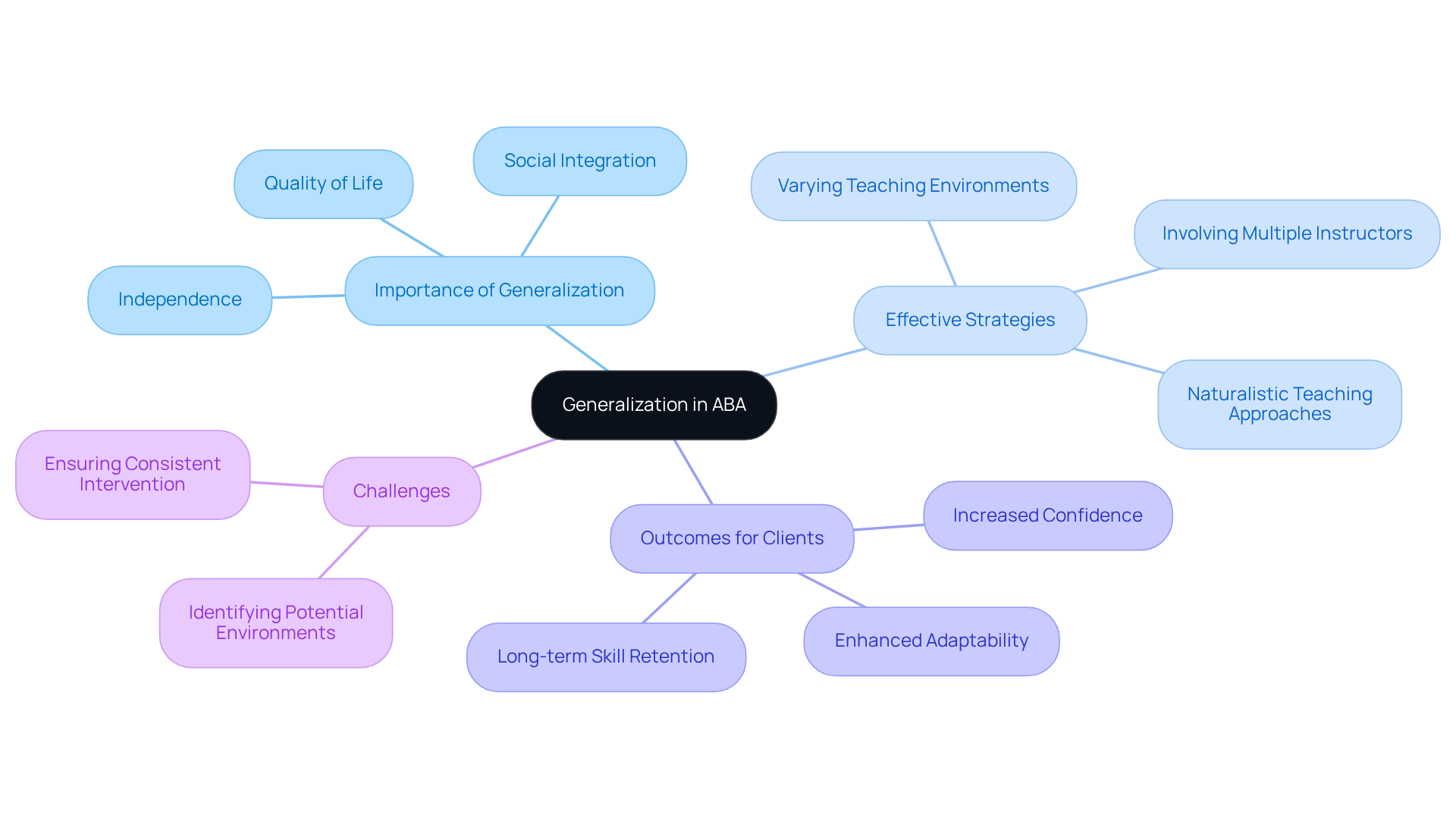
In the realm of Applied Behavior Analysis (ABA), understanding essential terminology is crucial for practitioners aiming to enhance their effectiveness in the field. The rising demand for Board Certified Behavior Analysts (BCBAs) underscores the urgency of mastering these terms to navigate the evolving landscape of ABA effectively. This article highlights nine fundamental ABA terms that not only define the discipline but also serve as invaluable tools for behavior analysts. By grasping these concepts, practitioners can apply evidence-based strategies to better support individuals with autism and other developmental disorders, ultimately improving outcomes and quality of life.
Key insights discussed include:
Additionally, the article emphasizes the necessity of generalization, ensuring that skills learned in therapy are applicable in real-world situations. As the field of ABA continues to grow, it is imperative for practitioners to remain informed and proactive in their professional development.
Embracing these essential ABA terms not only enriches practice but also empowers behavior analysts to make a meaningful impact in the lives of their clients. By prioritizing ongoing education and adaptation of strategies, practitioners can foster lasting behavioral changes that extend beyond therapy sessions. This commitment ultimately contributes to a more inclusive and supportive environment for individuals with diverse needs. Are you ready to elevate your practice and meet the demands of the field? Mastering these terms is your first step toward making a significant difference.
What is Hire ABA and its purpose?
Hire ABA is a specialized recruitment platform designed to connect Board Certified Behavior Analysts (BCBAs) with job opportunities, streamlining the hiring process and enhancing recruitment efficiency.
How much is the demand for BCBAs expected to grow?
The demand for BCBAs is projected to surge by 25% by 2026, with job listings for BCBAs rising by 58% in 2024.
What factors are driving the increased demand for BCBAs?
The increased demand is driven by heightened awareness of autism and the proven effectiveness of Applied Behavior Analysis (ABA) in addressing behavioral challenges.
What is the average salary range for BCBAs?
The average salary for BCBAs ranges from $61,000 to $90,000, with entry-level BCBAs earning between $61,000 and $70,000 and mid-level BCBAs earning between $70,000 and $80,000.
How does Hire ABA enhance the recruitment process for BCBAs?
Hire ABA enhances recruitment by offering personalized resume assessments and advanced job fit scoring, allowing BCBAs to find positions that align with their skills and career goals.
Why is geographical location important for BCBAs seeking jobs?
The demand for BCBAs varies significantly across regions, with urban areas presenting more favorable growth rates, making it essential for job seekers to consider geographical factors.
What is Applied Behavior Analysis (ABA)?
Applied Behavior Analysis (ABA) is a scientific discipline focused on understanding and improving human behavior through systematic evaluation and modification strategies, particularly in therapeutic contexts for individuals with autism and developmental disorders.
What has been the trend in the demand for ABA professionals from 2010 to 2021?
There has been a remarkable 5,852% increase in the demand for professionals familiar with ABA from 2010 to 2021.
What is the significance of early intervention in ABA therapy?
Early intervention in ABA therapy is critical, as starting therapy at a young age can lead to significant advancements in communication, social skills, and adaptive functions.
What are the two categories of reinforcement in ABA?
The two categories of reinforcement in ABA are positive reinforcement, which introduces a desirable stimulus, and negative reinforcement, which removes an aversive stimulus.
Why is caregiver involvement important in ABA therapy?
Caregiver involvement is essential as it significantly enhances the effectiveness of therapy; research shows that 90% of children exhibit progress when therapy hours include active caregiver participation.
What are the outcomes of using reinforcement strategies in ABA?
Interventions following ABA principles yield 82% higher client satisfaction and 64% improved long-term outcomes, demonstrating the effectiveness of reinforcement strategies in modifying behavior.
Our expert recruitment strategies and AI-driven sourcing ensure that you receive top-notch candidates quickly, without compromising on quality. Whether you’re looking for BCBAs, Clinical Directors, or RBTs, we’ve got you covered.